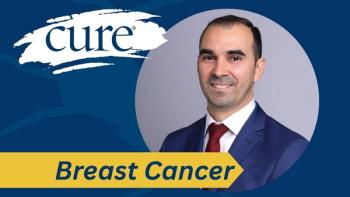
Real-World Data Supports Amtagvi’s Benefit in Advanced Melanoma
Key Takeaways
- Amtagvi shows a 48.8% ORR in advanced melanoma, with higher efficacy in less heavily treated patients.
- FDA granted accelerated approval for Amtagvi in 2024 for unresectable or metastatic melanoma after prior PD-1 or BRAF inhibitor therapy.
A real-world study showed a 49% response rate with Amtagvi in patients with advanced melanoma, supporting earlier use after immunotherapy.
Real-world data from a retrospective study demonstrates the benefit of commercial Amtagvi (lifileucel) for patients with advanced, unresectable or metastatic melanoma, previously treated with immune checkpoint inhibitor therapy and, if appropriate, targeted therapy.
This was announced in a news release from Iovance Biotherapeutics.
“Lifileucel demonstrates a robust response rate in real-world clinical settings,” Dr. Lilit Karapetyan of H. Lee Moffitt Cancer Center & Research Institute said in the news release. “I am particularly encouraged by the higher response rate in less heavily treated patients. It is remarkable to observe a response in more than half of those patients, supporting consideration of lifileucel as soon as possible after immune checkpoint inhibitor therapy. I am confident in the potential for positive outcomes in more patients as we continue to adopt [Amtagvi].”
At four authorized treatment centers, 41 patients were evaluable for response, with physicians reporting an overall response rate (ORR) of 48.8% (20 of 41). Patients who received Amtagvi in the third line or earlier (two or fewer prior therapies) had a higher ORR of 60.9% (14 of 23), while those treated after three or more previous therapies had an ORR of 33.3% (6 of 18). All patients received commercial Amtagvi as outlined in the U.S. prescribing label and had completed at least one follow-up assessment by their physician.
Extended follow-up data in addition to other findings from this real-world study are expected to be shared at a medical conference later this year.
Furthermore,
What is Amtagvi and How Safe is it?
Amtagvi is a treatment for patients over the age of 18 with melanoma that cannot be treated with surgery or has spread to other parts of the body. Specifically, the therapy is used when the melanoma has stopped responding to a PD-1 blocking drug, and if there is a BRAF mutation, when a BRAF or MEK inhibitor has also stopped working.
Amtagvi is made from your own tumor. After the tumor is removed, the tissue is sent to a lab where special immune cells from the tumor are grown into billions of cells. This process typically takes approximately 34 days, though timing may vary.
Once the treatment is ready, chemotherapy is given to prepare the body. About 30 to 60 minutes before the infusion, patients may receive medications to prevent allergic reactions and reduce fever. Amtagvi is then given intravenously across less than 90 minutes, in one to four infusion bags.
After receiving Amtagvi, patients will stay in the hospital to complete IL-2 (aldesleukin) infusions and recover from any serious side effects. Once discharged, patients should remain within 2 hours of their respective treatment centers for several weeks so that their care team can monitor responses and manage side effects.
Common side effects include chills, fever, low white and red blood cell counts (which can increase infection risk and cause fatigue), tiredness, fast or irregular heartbeat, rash, low blood pressure, and diarrhea.
Reference
“Real-World Data Demonstrate a 49% Response Rate for Commercial Amtagvi® in Patients with Advanced Melanoma,” Iovance Biotherapeutics, Inc.
For more news on cancer updates, research and education, don’t forget to




